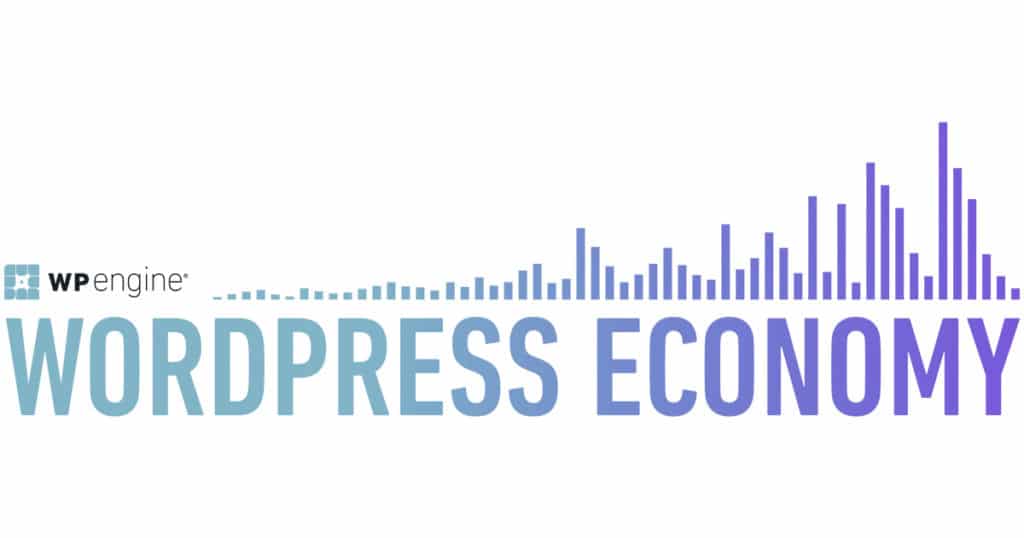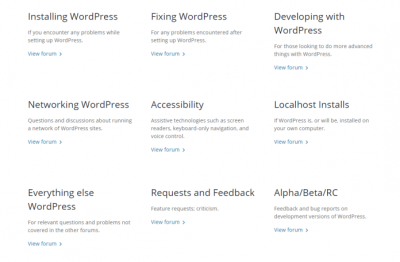When you think of websites, blogs, or online stores, chances are you’ve come across WordPress. It’s the backbone behind a huge chunk of the internet, powering everything from small personal blogs to massive e-commerce sites. But have you ever wondered how WordPress makes its money? Well, it’s not just about powering websites—
Overview of WordPress as a Platform and Its Popularity
WordPress started out in 2003 as a simple blogging platform, but over the years, it has blossomed into the most popular website creation tool worldwide. Today, it’s estimated that over 43% of all websites on the internet run on WordPress—that’s nearly half! Why is it so popular? Well, for starters, it’s incredibly user-friendly, even for those who aren’t tech-savvy. You can set up a professional-looking website without writing a single line of code.
Plus, WordPress is highly customizable. With thousands of themes and plugins, users can tailor their sites to match their unique brand or purpose. Whether you’re running a small personal blog, a portfolio, or a large online store, WordPress has the tools you need. Its open-source nature encourages a vibrant community of developers and users who constantly improve and expand its capabilities.
Another reason for its widespread popularity is its cost-effectiveness. The core software is free, making it accessible for individuals and small businesses. Revenue is generated primarily through premium themes, plugins, hosting services, and enterprise solutions, which we’ll explore more in detail. Overall, WordPress’s combination of flexibility, ease of use, and community support cements its position as the go-to platform for millions worldwide.
3. Primary Revenue Sources for WordPress
When we talk about WordPress’s revenue streams, it’s a mix of different elements working together to keep the platform thriving. Even though WordPress itself is open-source and free to use, there are several ways the company and its ecosystem generate income.
First up, WordPress.com, which is the hosted service offered by Automattic— the company behind WordPress. They provide a range of plans, from free options to premium packages, and that’s a big chunk of their revenue. Users pay for extra features like custom domains, increased storage, and advanced design tools.
Next, there’s premium plugins and themes. Developers create thousands of themes and plugins, many of which are free, but the premium versions can cost anywhere from $20 to hundreds of dollars. These are sold through marketplaces like Envato or directly via developer websites, and Automattic earns a cut from some of these sales.
Another significant revenue source is advertising and affiliate marketing. WordPress sites can display ads through services like Google AdSense, and some site owners earn revenue from clicks. While WordPress.org itself doesn’t sell ads, the ecosystem promotes monetization strategies that generate income for site owners, which indirectly benefits the platform’s community.
Finally, enterprise services and support form a niche but lucrative part of the revenue pie. Large companies or organizations might pay for custom hosting, dedicated support, or consulting services—these high-value clients contribute a notable share of income for WordPress-related businesses.
In essence, WordPress’s revenue comes from a blend of hosting services, premium products, support, and the broader ecosystem of themes and plugins. This diversified approach helps sustain the platform’s growth and innovation, making it a powerhouse in the web world.
4. Details on WordPress.com Revenue and Business Model
Focusing on WordPress.com, the commercial arm of the platform powered by Automattic, gives us a clearer picture of how revenue flows in. WordPress.com offers a freemium model—users can get started for free but often upgrade to paid plans for extra features.
Here’s a quick breakdown of their typical revenue streams:
- Subscription Plans: These range from Personal and Premium plans to Business and eCommerce options. The paid plans unlock features like custom domains, advanced design customization, increased storage, and monetization tools.
- Domain Sales: Many users purchase custom domains directly through WordPress.com, providing a steady income stream.
- Advertising Revenue: The WordPress.com platform runs ads on free sites, and site owners have the option to upgrade to remove ads or to run their own monetization strategies, which can generate affiliate or ad revenue shared with Automattic.
- Commerce and eCommerce: With WooCommerce, the popular WordPress plugin for online stores, WordPress.com offers integrated eCommerce capabilities. While WooCommerce itself is free, Automattic earns through extensions, hosting, and transaction fees in some cases.
- Partner and Affiliate Programs: WordPress.com promotes third-party tools and services, earning commissions on sales generated through these partnerships.
Business Model Insights:
Automattic’s approach is primarily subscription-based for its hosted service, which provides predictable, recurring revenue. They also monetize their ecosystem of plugins, themes, and services, creating multiple touchpoints for income. Their focus on simplicity and scalability makes WordPress.com appealing to both individual bloggers and large enterprises.
Additionally, their open-source roots create a vibrant community of developers, some of whom sell premium products on the platform, further fueling the overall ecosystem’s growth. This symbiotic relationship between free open-source software and paid services is a key element of WordPress’s business model.
In summary, WordPress.com’s revenue is a well-oiled machine built on subscriptions, domain sales, eCommerce, and partnerships. This diversified business model has helped WordPress and Automattic stay resilient and continue expanding their footprint in the digital world.
5. Revenue from Premium Themes and Plugins
One of the biggest revenue streams for WordPress comes from its thriving marketplace of premium themes and plugins. While the core WordPress software itself is free and open-source, the ecosystem around it is a bustling marketplace where developers and companies sell their creations to enhance website functionality and design.
Premium themes typically offer more customization options, unique designs, and dedicated support, making them appealing to users who want a professional-looking website without hiring a developer. Plugins, on the other hand, extend the functionality of WordPress sites — from SEO optimization and e-commerce features to security enhancements and social media integrations.
There are several ways WordPress and its ecosystem generate revenue from these products:
- Marketplace commissions: Companies like Envato’s ThemeForest and CodeCanyon take a cut of every sale made through their platforms. WordPress-related products are among the top-selling items in these marketplaces.
- Direct sales on developer websites: Many plugin and theme developers sell directly through their websites, often offering tiered pricing or subscriptions.
- Membership and subscription models: Some premium themes and plugins are sold via memberships, giving users ongoing updates, support, and access to new features.
Estimating the exact revenue from these sources is tricky because many developers keep their sales figures private. However, industry analysts suggest that globally, the market for premium WordPress themes and plugins is worth hundreds of millions of dollars annually. Major players like Elegant Themes, Beaver Builder, and Yoast generate significant income from their premium offerings.
For example, Elegant Themes, famous for the Divi builder, reportedly earns tens of millions of dollars per year from theme and plugin sales alone. These figures highlight how lucrative this part of the WordPress ecosystem has become, turning many developers into successful entrepreneurs.
In conclusion, revenue from premium themes and plugins is a cornerstone of the WordPress financial ecosystem. As the demand for more sophisticated, customizable, and user-friendly website solutions continues to grow, so will the income generated from these digital products.
6. Advertising and Affiliate Marketing Income
Another major revenue source for WordPress comes from advertising and affiliate marketing. While the WordPress.org software remains free, the ecosystem around it—blogs, tutorials, hosting providers, and marketplace sites—generates substantial income through these channels.
Many websites built on WordPress host advertising banners, sponsored content, and affiliate links to monetize their traffic. Here’s how this typically works:
- Advertising networks: Popular sites and blogs display ads through networks like Google AdSense or Media.net. When visitors click on these ads, site owners earn a share of the revenue.
- Sponsored content: Companies pay website owners to publish articles, reviews, or videos promoting their products or services. These sponsored pieces are often clearly labeled but provide a lucrative income stream.
- Affiliate marketing: WordPress site owners often promote products or services related to their niche using affiliate links. When a visitor clicks the link and makes a purchase, the site owner earns a commission.
Affiliate marketing is especially popular among bloggers and niche websites. For instance, a tech blog might recommend hosting providers, security plugins, or e-commerce solutions, earning commissions on sales generated through their links.
Estimating the total income generated via advertising and affiliate marketing is challenging because it varies widely depending on traffic volume, niche, and monetization strategies. However, some of the largest WordPress-focused publishers and bloggers report earning six-figure incomes annually just through affiliate programs and ad revenue combined.
Furthermore, hosting providers like Bluehost, SiteGround, and WP Engine spend millions annually on advertising campaigns targeting WordPress users. These investments in ads and sponsorships also contribute to the overall revenue generated by the WordPress ecosystem.
In essence, advertising and affiliate marketing are vital components of the broader WordPress ecosystem’s income streams. They empower content creators, bloggers, and niche sites to turn their passion into profitable ventures, fueling further growth and innovation in the WordPress community.
7. WordPress’s Enterprise and Commercial Services Revenue
When we talk about WordPress’s financial success, a significant piece of the puzzle is its enterprise and commercial services. While the core WordPress software is open-source and free, the company behind it, Automattic, has built a robust business model by offering premium services tailored for larger organizations, media outlets, and businesses that need more than just a basic website.
These services include:
- Premium Hosting: Automattic provides high-end hosting solutions through products like WordPress VIP, which is designed for large-scale publishers and brands that require top-tier reliability, security, and performance.
- Enterprise-Level Support: Custom support packages help big organizations manage their websites smoothly, troubleshoot issues, and optimize performance.
- Custom Development & Consulting: Businesses can hire experts for custom themes, plugins, or site architecture tailored to their unique needs.
- Security & Backup Services: Ensuring the safety of enterprise websites is critical, so Automattic offers advanced security solutions and automatic backups.
While exact revenue figures from these services are not publicly disclosed, industry insiders estimate that WordPress VIP alone generates tens of millions of dollars annually. This is because it’s a premium product targeted at high-value clients who are willing to pay a premium for reliability, security, and dedicated support. For instance, some reports suggest that WordPress VIP serves over 1,000 clients worldwide, including major brands like Facebook, Time Inc., and CNN.
Furthermore, automating and streamlining enterprise website management has become a lucrative avenue. Many large organizations prefer to outsource their web infrastructure to trusted providers like Automattic, which can handle scalability and security, freeing up internal resources.
Overall, the enterprise and commercial segment contributes a significant chunk of revenue to WordPress’s ecosystem, showcasing how the open-source platform has transitioned into a lucrative business front, especially at the high end of the market. It’s a perfect example of how free software can underpin a profitable enterprise when paired with premium services.
8. Revenue Generated by Automattic, the Company Behind WordPress.com
Now, let’s shift our focus to Automattic itself—the company behind WordPress.com, WooCommerce, Jetpack, and many other popular tools. Automattic is the driving force that turns the WordPress ecosystem into a thriving business. So, how much revenue does Automattic generate? Well, while exact figures are not always publicly available, we can piece together a pretty good picture based on available data and industry estimates.
Automattic’s revenue streams are diverse, with the main sources including:
- Premium Subscriptions: WordPress.com offers a range of paid plans—from personal to business to enterprise. These plans include additional features, custom domains, increased storage, and advanced analytics. The subscription model provides steady recurring revenue.
- Advertising & Affiliate Income: While WordPress.com itself does not heavily rely on ads, Automattic earns some income through partnerships and affiliate marketing.
- Commerce & Plugins: WooCommerce, the popular e-commerce plugin, generates revenue via extensions, premium themes, and transaction fees for high-volume stores.
- Enterprise Solutions: As mentioned earlier, Automattic’s enterprise services like WordPress VIP contribute significantly to its revenue, serving large clients with custom needs.
- Acquisitions & Other Products: Automattic also owns several other products and services, which add to its top line.
Based on industry estimates, Automattic’s annual revenue is believed to be in the ballpark of $100 million to $200 million. Some reports from industry insiders suggest that the company has been growing rapidly, especially as more businesses recognize the power of WordPress-powered websites for their online presence.
Another way to gauge Automattic’s success is by its valuation. In 2021, Automattic raised funding at a valuation of over $3 billion, which reflects the confidence investors have in its business model and revenue potential.
In summary, Automattic’s revenue is a blend of subscription revenue, enterprise services, and commercial products. Its ability to monetize a predominantly free open-source platform illustrates how a company can build a sustainable and highly profitable business around community-driven software. As WordPress continues to dominate the web, Automattic’s revenue streams are likely to keep expanding, solidifying its place as a powerhouse in the online world.
9. Impact of WordPress’s Revenue on the Web Development Industry
When we talk about WordPress’s revenue, it’s not just a number — it’s a reflection of how much influence this platform has on the entire web development world. With billions of websites powered by WordPress, its financial success has ripple effects that shape industry trends, business models, and even the skills developers focus on.
One of the biggest impacts is how WordPress has democratized web development. Thanks to its affordability and user-friendly interface, even small businesses, bloggers, and entrepreneurs can create professional-looking websites without needing deep technical skills. This shift means that traditional web development agencies are now expanding their services to include WordPress-specific solutions, often focusing on customization, plugins, and ongoing site management rather than building everything from scratch.
Moreover, the revenue generated by WordPress fuels a vast ecosystem of developers, designers, hosting providers, plugin and theme creators, and more. This ecosystem creates jobs and business opportunities around the platform, encouraging innovation and competition. As WordPress earns more—whether through hosting, premium plugins, or enterprise services—it invests back into the community by supporting events like WordCamps, development initiatives, and educational resources, which further boosts the industry’s growth.
However, this growth also brings some challenges. The surge in WordPress’s popularity means increased competition among developers and agencies. Clients often seek cost-effective solutions, which pressures providers to deliver high-quality work efficiently. Additionally, the reliance on third-party plugins and themes can introduce security concerns and compatibility issues, prompting developers to prioritize security and best practices. Overall, the revenue impact of WordPress has transformed the web development landscape into a more vibrant, accessible, yet competitive space.
10. Future Revenue Opportunities for WordPress
Looking ahead, the future of WordPress’s revenue streams is as exciting as it is promising. As technology evolves and online presence becomes even more crucial for businesses, WordPress is positioned to tap into new revenue opportunities that can further solidify its dominance.
1. Enterprise Solutions and Managed Services: More large corporations and enterprises are adopting WordPress for their websites, needing customized, scalable, and secure solutions. WordPress can expand its revenue by offering premium enterprise services, managed hosting, and dedicated support, much like how some providers already offer enterprise-grade plans. This segment has the potential to generate significant, recurring income.
2. Advanced E-Commerce Capabilities: E-commerce is booming, and WordPress’s WooCommerce plugin is a big part of that. Future growth can come from enhanced integrations, premium extensions, and tailored e-commerce solutions that cater to niche markets. As online shopping continues to grow, so does the revenue potential for WordPress-based stores.
3. Subscription and SaaS Models: WordPress can explore more subscription-based offerings—such as premium themes, plugins, or hosting plans—that provide steady, predictable revenue. SaaS solutions for site management, analytics, SEO, and security are also ripe for expansion, helping users optimize their sites while generating income for WordPress providers.
4. Educational Content and Certification: As the platform matures, there’s a growing opportunity in training, certifications, and courses. Offering official certifications for developers, designers, or marketers can create a new revenue stream while also elevating the quality of the ecosystem.
5. Innovation in New Technologies: Embracing emerging technologies like AI, headless CMS architectures, and progressive web apps (PWAs) can open doors to new markets. Developing tools and services around these innovations will not only attract new users but also generate additional revenue streams.
In summary, as WordPress continues to grow and adapt, its revenue opportunities are boundless. The platform’s ability to innovate, serve new markets, and deepen its ecosystem will determine how much more revenue it can generate in the coming years. For developers, entrepreneurs, and businesses, this means exciting times ahead, full of potential for collaboration and growth.
Conclusion and Key Takeaways on WordPress Revenue
WordPress has established itself as a dominant force in the website creation and content management industry, generating significant revenue streams from multiple sources. Its open-source platform attracts millions of users worldwide, while its premium offerings and services contribute substantially to its financial success.
Key revenue sources include:
- Premium Themes and Plugins: Thousands of developers create and sell themes and plugins, generating billions in revenue annually.
- Hosting Services: WordPress.com offers tiered hosting plans, with a large user base subscribing to paid packages for enhanced features.
- Advertising and Affiliate Marketing: Monetization through advertising partnerships and affiliate programs boost income.
- Enterprise and Business Solutions: Custom solutions and enterprise support services bring in high-value clients.
Recent estimates suggest that WordPress’s parent company, Automattic, generates over $300 million annually, with the broader WordPress ecosystem contributing billions to the global digital economy. This financial success underscores WordPress’s position as a cornerstone of online presence for individuals and businesses alike.
In conclusion, WordPress’s revenue model is diverse and robust, reflecting its widespread adoption and the vibrant ecosystem built around it. As digital content continues to grow, WordPress’s revenue potential remains strong, making it a key player in the future of web development and online publishing.



